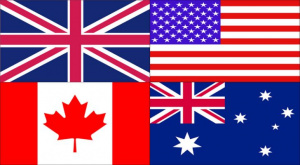Language/English/Grammar/More-Uses-of-the-Dash
Jump to navigation
Jump to search
Rate this lesson:
Further Uses of the dash (–) in English
- Lesson 1: The Hyphen & the Dash
- Lesson 2: More Uses of the Dash
This is a continuation of the lesson on the hyphen and the dash. The uses of the dash will be treated in this lesson.
Take some time to dive into these other pages after completing this lesson: Verbosity or Circumlocution, Contractions, Collocations with break & Sentense Structure.
Interruption or other sentence[edit | edit source]
- Sometimes in written English, there is a necessity for a whole sentence to interrupt or enter into another sentence in order to pass across the complete message without ambiguity. An example:
- The rivers – I cannot remember all their names – have been dredged.
Break in a complete sentence[edit | edit source]
- The dash is used to show a break in a complete sentence.
- If he entered through the door, he must still be in there – so let’s keep our fingers crossed.
Emphasize the repeated word[edit | edit source]
- At times, a single placed between a repeated word is used to emphasize the repeated word. An example:
- The boy made new friends – friends that are more harm than good.
Set aside a summary or compile a list of items[edit | edit source]
- A single dash can be used to set aside a summary or compile a list of items. For example:
- Vanilla, flour, eggs, nutmeg – these are necessary in baking a cake.
- She bought three items – a cake tin, a spatula and an egg whisk.
2 dashes: explanatory part of a sentence or afterthought[edit | edit source]
- Dashes can also appear in pairs in a sentence. In order to indicate an explanatory part of a sentence or an afterthought, two dashes can be used like parentheses. An example:
- Everybody – including children – couldn’t eat the cake because it was filled with sugar.
Other Lessons[edit | edit source]
- Although VS Even though
- Questions
- More on Tautology
- Quantifiers
- Possible Positions of Adverbs of Time in a Sentence
- The Possessive Case
- GERUNDS
- In: place
- Perfect Tenses
- Actual and actually

